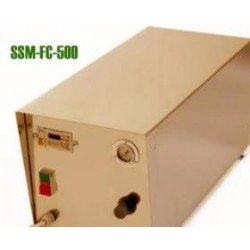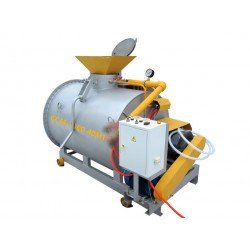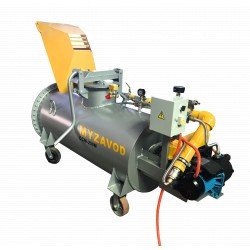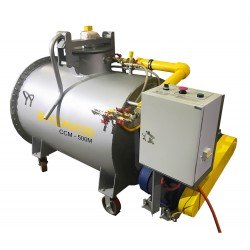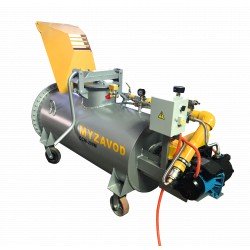Today, strict requirements are imposed on building materials. They must have both durability and good thermal insulation properties so that heat losses in the building are minimal and the service life is as long as possible.
Scope of application of foam concrete
Foam concrete is a high quality material, which is now successfully used in the form of blocks in the construction of residential buildings, shopping and office centers, production facilities. In fact, this material is nothing more than a highly porous mass consisting of cement, sand and a special substance - foaming agent. When hardening, this mixture is converted into a kind of artificial stone, which we call foam concrete. For this reason, with the development of methods that make it possible to produce a stable mass of foam concrete in terms of parameters directly on the construction sites, the area of use of this material has increased markedly.
There is nothing strange about the fact that now monolithic foam concrete is beginning to gain such popularity. The success of the material lies in its unique characteristics. The principle of its manufacture makes it possible to obtain without much effort at the construction site (taking into account the requirements) insulating and simultaneously structural material with precisely defined indicators. Foam concrete perfectly combines with all kinds of materials and structures, greatly facilitating the various works and reducing the time of their implementation.
Advantages of using foam concrete for roofing
Everyone knows that the main disadvantage of flat roofs, in particular exploitable roofs, is their low reliability. Conventional roof slabs quickly deteriorate after two years from the date of installation. And this is not necessarily due to poor-quality roofing materials. The roofing pie is subjected to numerous impacts, which together lead to the complete destruction of building structures. On the life of the roofing pie affects how coherently interact all its layers, including insulation.
Most often used to insulate roofs with backfill material or mineral wool slabs. Minwool due to its unique properties can provide high thermal insulation, but when absorbed by moisture it loses these abilities.
Faster damage to roof systems occurs in the summer because the accumulated moisture in the insulation when evaporating creates pressure, which flakes off the roof covering. In insulation moisture can penetrate due to violations of installation techniques, when laying mineral wool in wet weather. In addition, when the vapor barrier is broken moisture begins to be absorbed into the mineral wool material, as if in a sponge. Also to the accumulation of moisture in the roof can lead to mechanical stress (say, under the weight of the snow pressed roofing material).
All these shortcomings of conventional roofs can be forgotten if you use foam concrete to insulate the roof. The use of foam concrete in roof structures is absolutely unlimited. The material does not absorb moisture and is not afraid of high snow load, when laid it forms a completely waterproof monolithic layer. The service life of this insulation is incomparably higher than that of conventional insulation materials. Practically proved that the roof with such insulation does not require full-scale repair during the entire period of operation. In addition, by increasing the rigidity of the roof structure is provided by the constancy of its shape and size.
Another important advantage of monolithic foam concrete is that it does not burn at all. No sparks and open flame can ignite a roof insulated with foam concrete. In addition, foam concrete has a small mass, so it is suitable for the device of roofs on the buildings, bearing structures which have low strength. It is allowed to use foam concrete even on the lightweight slabs of profiled sheet.
Pouring is carried out using professional equipment for the production of foam concrete. Mini-plants, which produces our company offers you the opportunity to start producing foam concrete of a wide range of densities, from 150 to 1200 from insulating to the structural load-bearing respectively. The principle of laying allows you to feed the liquid mixture at a height of up to 30 m. Especially good is the fact that foam concrete reliably adheres to the surfaces of all materials, and the technology of its pouring does not require leveling the foundations and caulking cracks.












